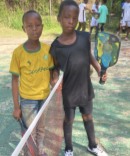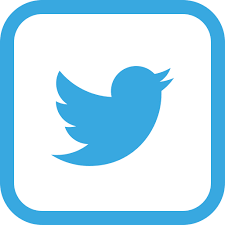Dashboard
New announcements
Free books
Dashboard
New announcements
Free books
Happy Arduino Day from Maktaba.org! 13 Free eBooks for Makers like you
Arduino is an open-source hardware and software ecosystem with a vibrant global user community, enabling everyone to learn and benefit from digital technology. Here's a special reading list for makers and tinkerers like you, around the world… Please join our Makers Forum too. We can’t wait to see what you’ll create!
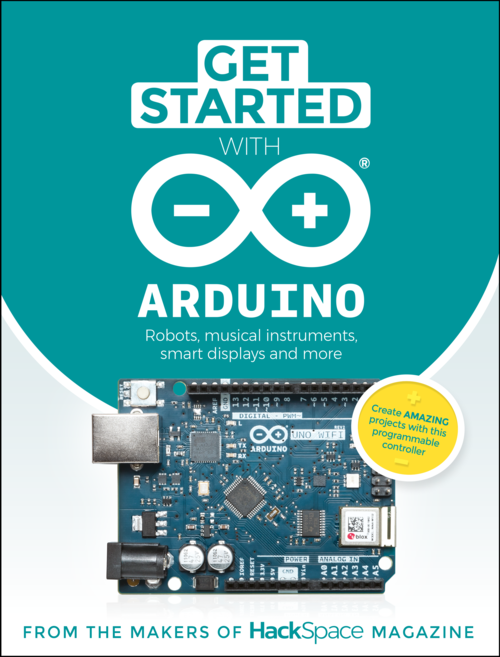
Written by
Hack Space
Publisher Raspberry Pi Ltd
Whether you want to build robots, smart devices, or any other electronically controlled projects, this is the book you need. We take you through how to program and connect an Arduino microcontroller board, then explore some great projects to make with it.
Build a four-legged walking robot
Create a Tetris-inspired clock
Grow your own veg with hydroponics
Make music with a DIY synthesizer
And much more!
...
Creative Commons Attribution-NonCommercial-ShareAlike 3.0 Unported (CC BY-NC-SA 3.0)
...
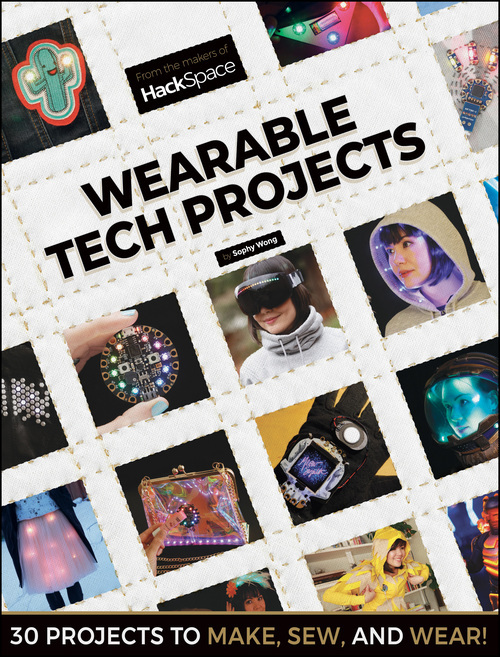
Written by
Sophy Wong
Publisher Raspberry Pi (Trading) Limited
"Forget Apple Watch and Fitbit — if we’re going to wear something electronic, we want to make it ourselves! Wearable Tech Projects, from the makers of HackSpace magazine, is a 164-page book packed with projects for the fashionable electronics enthusiast, with more than 30 projects which will blink, flash, and spark joy in your life." -- Site web Raspberry Pi
...
Creative Commons Attribution-NonCommercial-ShareAlike 3.0 Unported (CC BY-NC-SA 3.0)
...
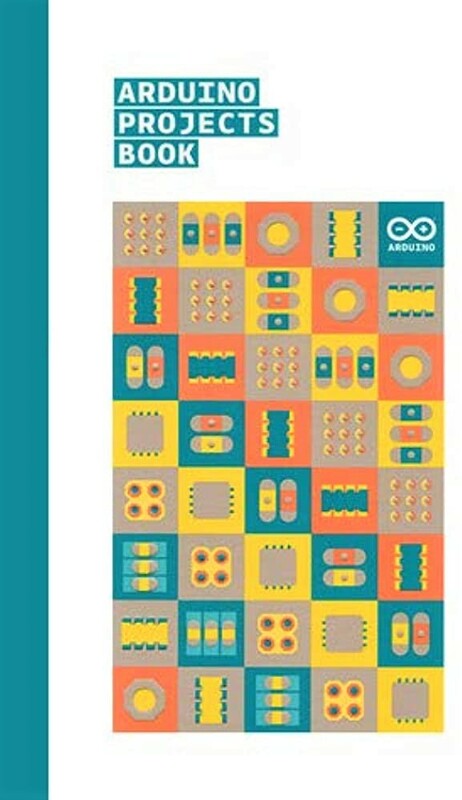
Everyone, every day, uses technology. Most of us leave the programming to engineers because we think coding and electronics are complicated and difficult; actually, they can be fun and exciting activities. Thanks to Arduino, designers, artists, hobbyists and students of all ages are learning to create things that light up, move, and respond to people, animals, plants, and the rest of the world. Over the years Arduino has been used as the “brain” in thousands of projects, one more creative than the last. A worldwide community of makers has gathered around this open-source platform, moving from personal computing to personal fabrication, and contributing to a new world of participation, cooperation and sharing. Arduino is open and simple. It’s founded on lessons we’ve learned teaching our own classes: if you start with the assumption that learning to make digital technologies is simple and accessible, you can make it so. Suddenly electronics and code become creative tools that anyone can use – like brushes and paint. This book walks you through the basics in a hands-on way, with creative projects you build by learning. Once you’ve mastered the basics, you’ll have a palette of software and circuits that you can use to create something beautiful, and make someone smile with what you invent.
Arduino makes it as easy as possible to program tiny computers called microcontrollers, which are what make objects interactive. You are surrounded by dozens of them every day: they are embedded in timers, thermostats, toys, remote controls, microwave ovens, even some toothbrushes. They just do one specific task, and if you hardly notice them – which is often the case – it’s because they are doing it well. They have been programmed to sense and control activity using sensors and actuators. Sensors listen to the physical world. They convert energy that you give off when you press buttons, or wave your arms, or shout, into electrical signals. Buttons and knobs are sensors that you touch with your fingers, but there are many other kinds of sensors. Actuators take action in the physical world. They convert electrical energy back into physical energy, like light and heat and movement. Microcontrollers listen to sensors and talk to actuators. They decide what to do based on a program that you write.
...
The text of the arduino projects book is licensed under a Creative Commons attribution-noncommercial-sharealike 3.0 license 2012 by Arduino LLC. This means that you can copy, reuse, adapt and build upon the text of this book non commercially while attributing the original work.
...
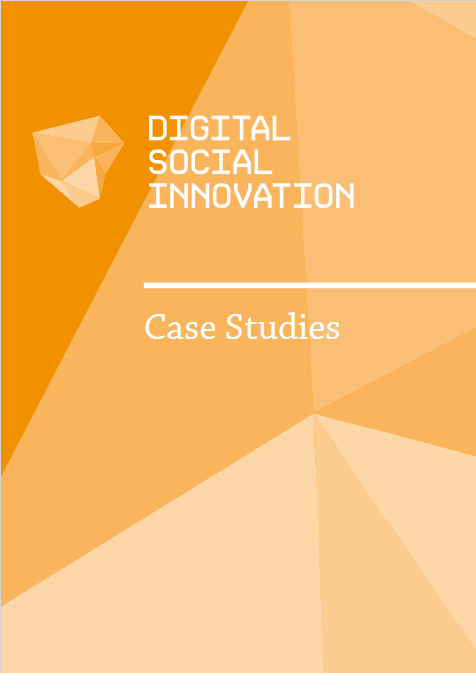
Publisher European Union
The internet is playing an ever increasing role in how we work, play, and relate to each other. As a natural result of this many of the most exciting new innovations that address social issues are being developed online. We call this exciting new field Digital Social Innovation and it includes a diverse set of activities and actors.
However, while the field of digital social innovation practice is growing rapidly, there is little knowledge around what best practice looks like, where it is happening, who the digital social innovators are and what strategic approaches can best support its growth.
...
CC BY-NC-SA 4.0
...
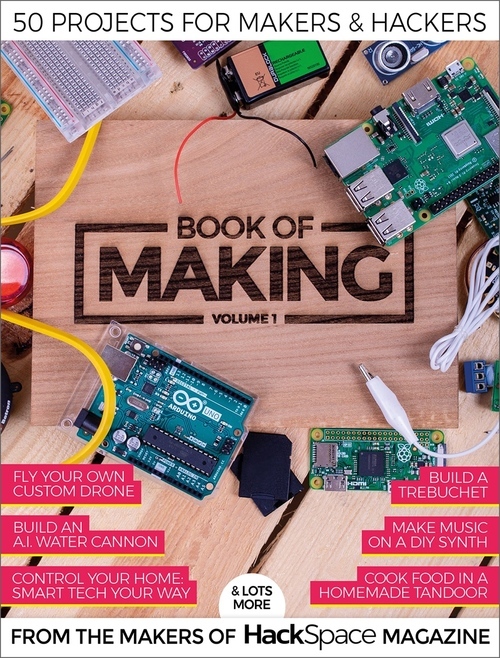
50 Projects for Makers & Hackers
Written by
Hack Space
Publisher Raspberry Pi Press
Includes 50 projects for makers and hackers.
We’ve gathered up our favourite maker projects from the first year of HackSpace magazine in one place – the Book of Making volume one. It’s 180 pages of hands-on guides, tips, tricks, and inspiration. We show you how to build a tandoor, create your own drone, target your enemies with a face-tracking water gun, and much more. Whether you’ve got an hour to build something or you’re looking for a weekend project, we’ve got a range of maker projects to choose from.
Step into the wonderful world of making
Be inspired by amazing projects from makerspace communities around the world
Make your own creations with step-by-step guides
Perfect projects for an hour, an afternoon, or weekend
...
Creative Commons Attribution-NonCommercial-ShareAlike 3.0 Unported (CC BY-NC-SA 3.0)
Available in more additional formats via archive.org
...
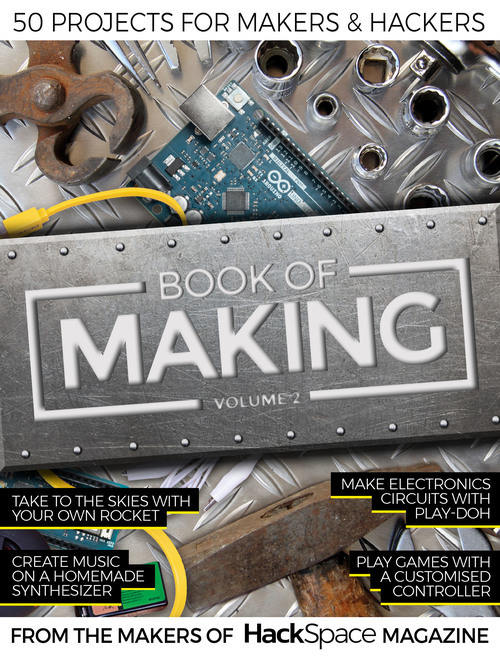
50 Projects for Makers & Hackers
Written by
Hack Space
Publisher Raspberry Pi Press
We’ve gathered up our favourite maker projects from the second year of HackSpace magazine in one place – the Book of Making volume two. It’s 180 pages of hands-on guides, tips, tricks, and inspiration. We show you how to build and launch your own rocket, create electronics circuits with Play-Doh, build your own polyphonic synthesizer, and much more. Whether you’ve got an hour to build something or you’re looking for a weekend project, we’ve got a range of maker projects to choose from.
Step into the wonderful world of making
Be inspired by amazing projects from makerspace communities around the world
Make your own creations with step-by-step guides
Perfect projects for an hour, an afternoon, or weekend
...
Creative Commons Attribution-NonCommercial-ShareAlike 3.0 Unported (CC BY-NC-SA 3.0)
Available in more additional formats via archive.org
...
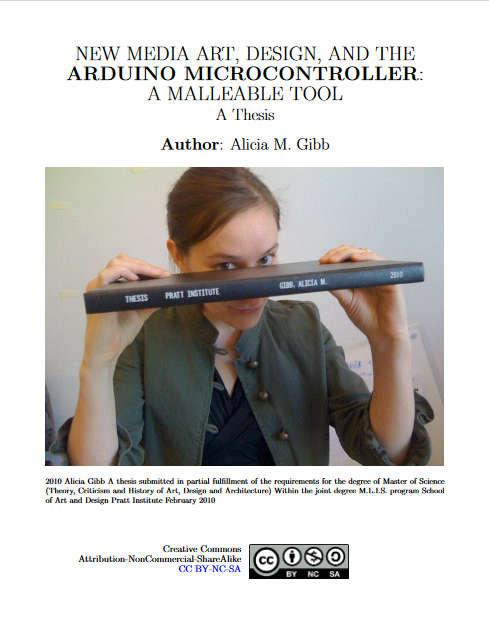
A Malleable Tool
Written by
Alicia M. Gibb
Publisher Pratt Institute
The Arduino microcontroller is used in art and design as an open source programmable tool to create interactive works. It can drive motors, LEDs, sensors and other components. Microcontrollers are small computing systems used for low power and low memory purposes. A microcontroller consists of a microchip on a circuit board with read-write capabilities, memory, inputs and outputs. While microcontrollers have had a presence in the arts for decades, the Arduino microcontroller is among the first microcontrollers specifically designed for artists and designers. The Arduino microcontroller allows artists and designers to execute electronic-incorporated works without knowing the internals of the hardware or software. Artists and designers have been influential in the evolution of the Arduino microcontroller since its birth.
The Arduino microcontroller gives artists and designers the ability to use and modify computational hardware easily and inexpensively. Due to new tools such as these and the Arduino microcontroller, artists and designers are capable of completing tasks traditionally completed by electrical engineers.... Thanks to the Arduino's usable design, users spend less time figuring out the inner workings and more time experimenting and discovering how it can be used in different environments or scenarios. The Arduino community also helps inspire other Arduino users.
This book gives insights from from interviews with thirty-seven Arduino experts and community members conducted as part of the author's doctoral research.
{adapted from Intro]
...
CC BY-NC-SA
...
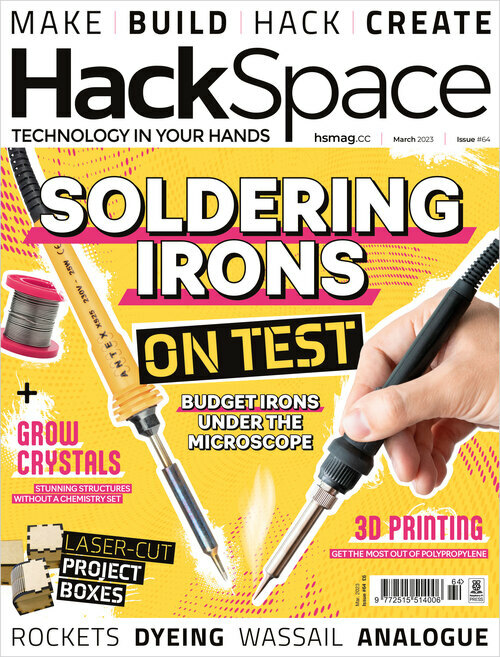
Publisher Raspberry Pi Ltd
Bodging electrical components together on a breadboard is all very well, but when it comes to making a circuit permanent, you have to learn to solder. We’ve rounded up the best wizarding wands to give you this magical maker power.
-Vandalism done properly
-A robot that can climb stairs
-Air-powered rocketry
-Use a laser cutter to make solid wood wobbly
...
Creative Commons Attribution-NonCommercial-ShareAlike 3.0 Unported (CC BY-NC-SA 3.0)
...
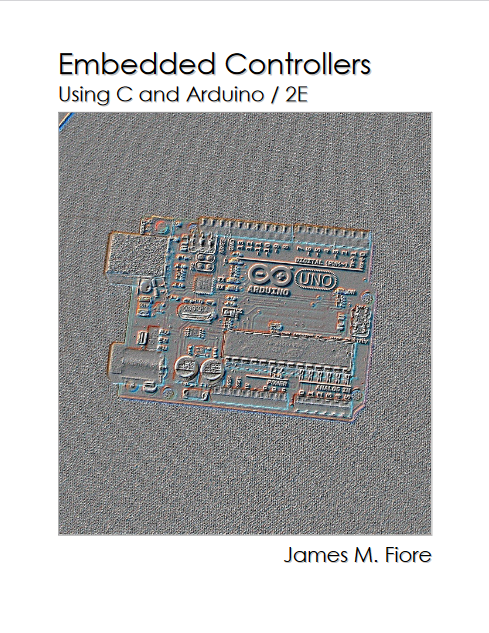
Second Edition with Lab Manual
Written by
Jim Fiore
Publisher dissidents
This text is designed to introduce and expand upon material related to the C programming language and embedded controllers, and specifically, the Arduino development system and associated Atmel ATmega microcontrollers. It is intended to fit the time constraints of a typical 3 to 4 credit hour course for electrical engineering technology and computer engineering technology programs, although it could also fit the needs of a hardware-oriented course in computer science. As such, the text does not attempt to cover every aspect of the C language, the Arduino system or Atmel AVR microcontrollers. The first section deals with the C language itself. It is assumed that the student is a relative newcomer to the C language but has some experience with another high level language, for example, Python. This means concepts such as conditionals and iteration are already familiar and the student can get up and running fairly quickly. From there, the Arduino development environment is examined. Unlike the myriad Arduino books now available, this text does not simply rely on the Arduino libraries. As convenient as the libraries may be, there are other, sometimes far more efficient, ways of programming the boards. Many of the chapters examine library source code to see “what's under the hood”. This more generic approach means it will be easier for the student to use other processors and development systems instead of being tightly tied to one platform.
...
CC BY-NC-SA
This edition includes both the lab manual and the textbook. For more great textbooks and materials check out the author's website. You can also find a more accessible version here from LibreTexts.
A Note From the Author
Hi. My name is Jim. I've been a college professor for 40+ years teaching in the areas of electrical engineering technology, computer programming and the science of sound. Along the way I've won a few awards for my efforts (State University of New York Chancellor's Award for Excellence in Teaching, SUNY Chancellor's Award for Excellence in Scholarship, and others). I'm also a musician and an endurance athlete. I established dissidents in the late 1980s as a way to offer various software items that I created, figuring that other people might find them useful as well. Some of these have been commercial and some have been freeware. I also write a lot, including published college text books and lab manuals. Recently, the open educational resource movement has gained momentum (no doubt at least partly propelled by the rising costs of college tuition and texts). As I am no supporter of the growing "corporate-ness" in our society, nor a believer in the dogma that unfettered free market capitalism is the answer to all problems, I decided to do the dissident thing and offer all the titles here free. This includes all of the above technical titles which, if offered by a traditional college textbook publisher, would be fetching in the neighborhood of $100 for a lab manual and over $200 for a text these days. It is my hope that others will do likewise, all of us offering something of value to the community, improving the situation for everyone. An appropriate quote comes to mind:
"We are at the very beginning of time for the human race. It is not unreasonable that we grapple with problems. But there are tens of thousands of years in the future. Our responsibility is to do what we can, learn what we can, improve the solutions, and pass them on."
- Richard Feynman
...
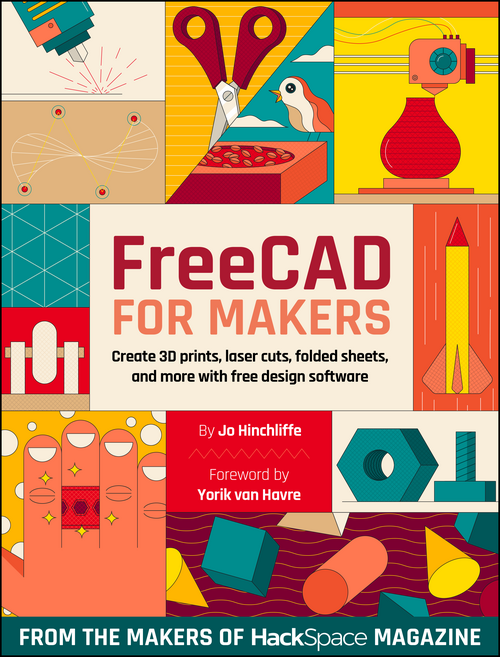
Written by
Hack Space
Publisher Raspberry Pi Ltd
FreeCAD is the number one free software 3D design program, and this PDF guide is the best way to get started with it. We’ll take you from absolute beginnner to advanced user, going from the basics of drawing a line and making it 3D all the way to parametric design, importing objects from photographs, designing for sheet metal, and loads more.
Because FreeCAD is free software, its users can add to it, writing extensions to the software to suit their needs. These add-ons, known as workbenches, cover a range of uses, including PCB design, pipes, timber-framing, architectural design… the list of practical use cases goes on and on. So, whatever you’re interested in building, you’ll find a FreeCAD workbench for it.
...
Creative Commons Attribution-NonCommercial-ShareAlike 3.0 Unported (CC BY-NC-SA 3.0)
...
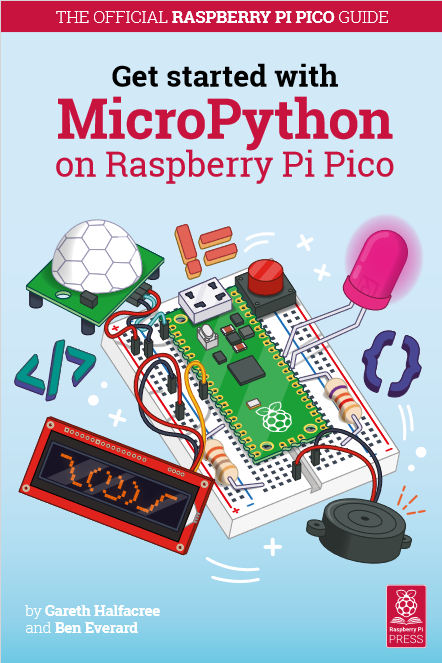
Written by
Gareth Halfacree Ben Everard
Publisher Raspberry Pi Press
Raspberry Pi Pico is a new low-cost, high-performance microcontroller board with flexible digital interfaces. Microcontrollers are computers stripped back to their bare essentials. You don’t use monitors or keyboards, but program them to take their input from, and send their output to the input/output pins. Using these programmable connections, you can light lights, make noises, send text to screens, and much more.
In Get Started with MicroPython on Raspberry Pi Pico, you will learn how to use the beginner-friendly language MicroPython to write programs and connect hardware to make your Raspberry Pi Pico interact with the world around it. Using these skills, you can create your own electro‑mechanical projects, whether for fun or to make your life easier.
Set up your Raspberry Pi Pico and start using it
Start writing programs using MicroPython
Control and sense electronic components
Discover how to use Pico’s unique Programmable IO
Make a reaction game, burglar alarm, temperature gauge, and many more
...
Creative Commons Attribution-NonCommercial-ShareAlike 3.0 Unported (CC BY-NC-SA 3.0)
...
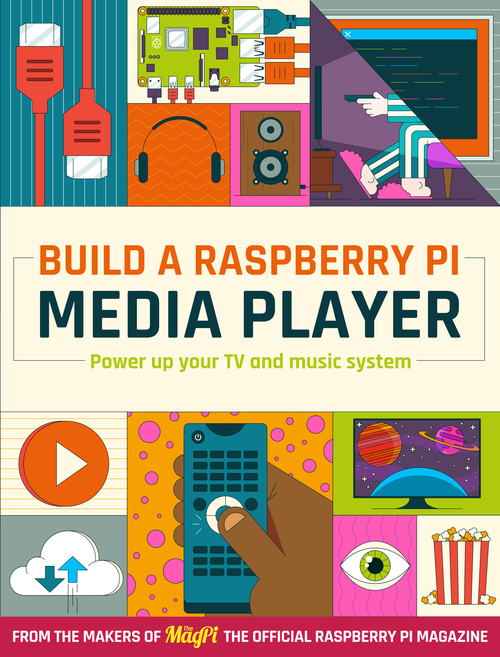
Written by
Hack Space
Publisher Raspberry Pi Press
Power up your TV and music system with Raspberry Pi: build the ultimate media centre, smart music system, and create a home server. Inside:
- Create the ultimate media centre. Gather your parts and build your Raspberry Pi media player
- Build the ultimate home server. Sharing and storing files on your Raspberry Pi enables you to access them from anywhere in the home
- Create an amazing music system. Create a digital jukebox using open-source software
- Set up multi-room audio. Fill your home with sound using a multi-room setup.
- Product tests. The best media player equipment tested
...
Creative Commons Attribution-NonCommercial-ShareAlike 3.0 Unported (CC BY-NC-SA 3.0)
...
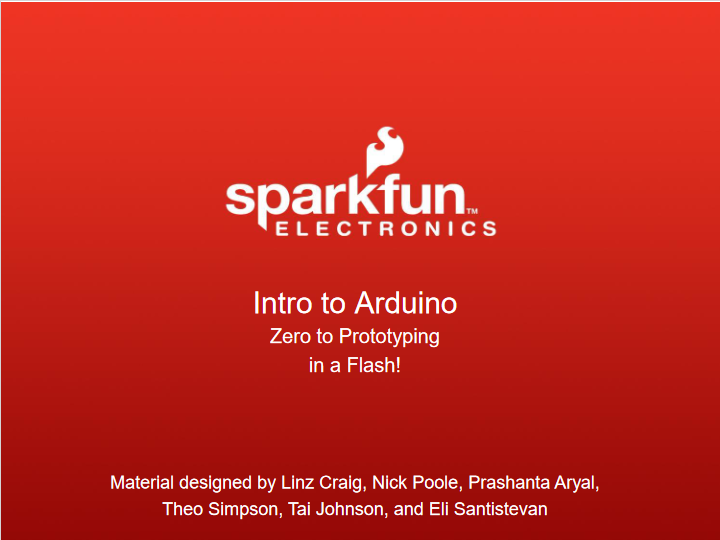
Zero to Prototyping in a Flash!
Publisher SparkFun
Arduino is the go-to gear for artists, hobbyists, students, and anyone with a gadgetry dream. Arduino arose out of another formidable challenge: how to teach students to create electronics, fast. This slide show presentation will take you through the big six concepts including digital In, digital out, analog in, analog out, serial communication and if statements. You'll also build several circuits using LEDs, potentiometers, buzzers, servo motors and more!
...
Material designed by Linz Craig, Nick Poole, Prashanta Aryal, Theo Simpson, Tai Johnson, and Eli Santistevan
Download the original powerpoint presentation from the SparkFun Resource Page
Creative Commons Attribution-ShareAlike 3.0
...













